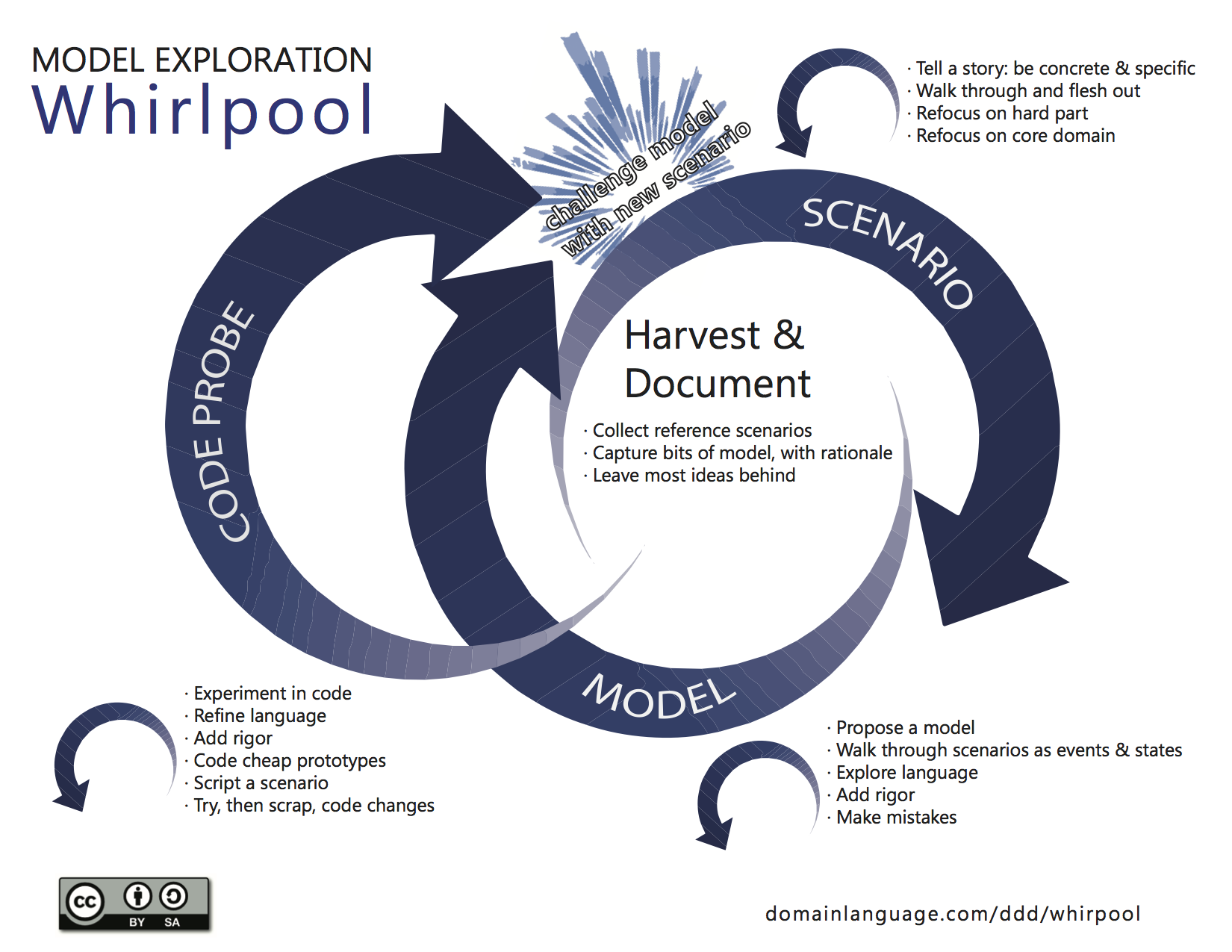In the world of software development, aligning the software solution with the real-world problem it aims to solve is crucial for success. One powerful approach to achieving this alignment is Domain-Driven Design (DDD). At the heart of DDD lies the DDD Whirlpool process, a collaborative and iterative approach that enables teams to model the core domain effectively.
The goal of the whirlpool process is to describe a way on how to iterate on the design of your domain model. The gist of this approach is to keep challenging the model.
Start by harvesting a few reference scenarios(through Event Storming or any other technique you like). Use these scenarios to create multiple possible models and quickly iterate over them. Once you end up with a workable model, you can start prototyping your model in code.
Introduce another scenario into the mix and see how it impacts your current model.
Keep repeating this process during the full development lifecycle.
